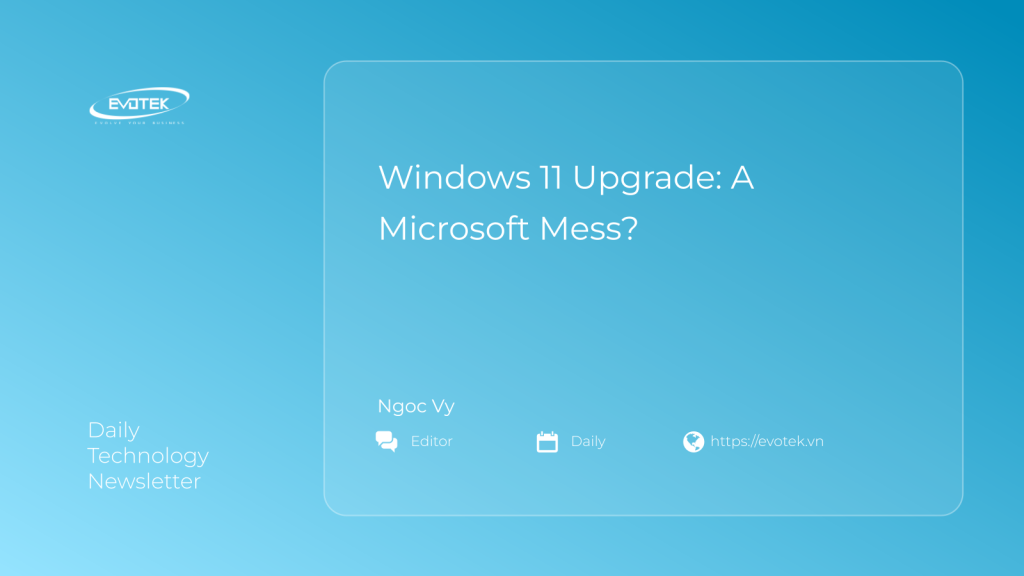For over three decades, Windows users expected a decade of support for their PCs. Windows 11 shattered that trust, creating a headache for everyone.
The Windows 11 Launch: A Rocky Start
In 2021, Microsoft planned a smooth Windows 11 upgrade for most Windows 10 users. But that plan changed, leading to potential issues for businesses and consumers in 2025.
A History of Support
Since the mid-90s, Microsoft has supported each Windows release for at least 10 years. This commitment meant users could upgrade their PCs for a decade or more. For example, a PC with Windows 7 in 2010 could upgrade to Windows 8 and then Windows 10.
Unexpected Restrictions
The release of Windows 11 in 2021 brought unexpected hardware restrictions, blocking upgrades on relatively new PCs. This reduced the support lifecycle for millions of devices built between 2016 and 2019.
The Chaotic Launch
Windows 11 had a rushed development cycle, announced in June 2021 and released in October 2021. The launch event was plagued with technical issues.
Initially, Microsoft had two sets of system requirements:
- Soft Floor: Detailed CPU compatibility checks and TPM 2.0 requirement.
- Hard Floor: Allowed any Windows 10 machine to upgrade, with a warning. This would have supported PCs built between 2015 and 2018.
Microsoft later changed these requirements, causing confusion and frustration.
What Went Wrong?
It appears there were disagreements within Microsoft on how to handle the Windows 11 upgrade path. One group wanted to maintain the 10-year support lifecycle, while another pushed for stricter requirements. The latter group prevailed, erasing traces of the original plan.
Despite this, workarounds still exist to install Windows 11 on older PCs that meet the “hard floor” requirements.
The Impact and Aftermath
Millions of Windows 10 PCs cannot upgrade to Windows 11 using official methods. This could affect around 50% of the Windows 10 installed base.
For businesses, Microsoft offers Extended Security Updates (ESU) for a fee or encourages upgrades to new hardware or cloud-based Windows 365 PCs. For consumers, Microsoft offered a one-year ESU subscription to ease concerns.
These moves raise questions about security. If the requirements are about security, why does Microsoft charge businesses for updates on older systems while limiting consumers to a shorter extension?
In conclusion, Microsoft’s handling of the Windows 11 upgrade has been problematic, creating confusion and potentially alienating a significant portion of its customer base. A more traditional approach could have avoided these issues.

 日本語
日本語 한국어
한국어 Tiếng Việt
Tiếng Việt 简体中文
简体中文